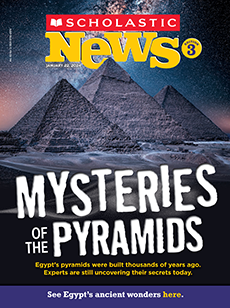Preview the Article
Have students preview the article by studying the headline, map, and photos. Discuss: What do you know about Nigeria from the nonfiction text features?
Preview the Word to Know
Project the online vocabulary slideshow and introduce the Word to Know.
- participate
Set a Purpose for Reading
As students read, have them think about how Nigeria is similar to and different from the United States.
